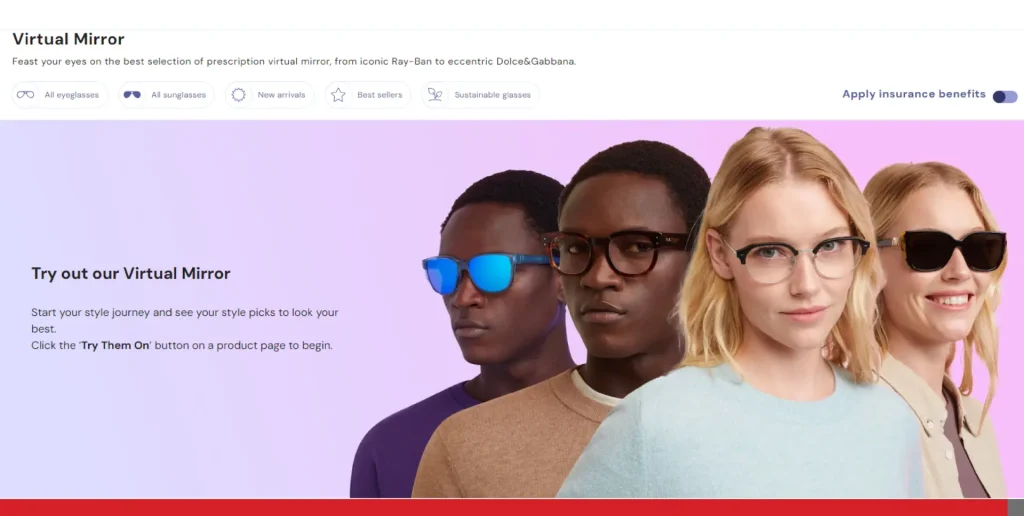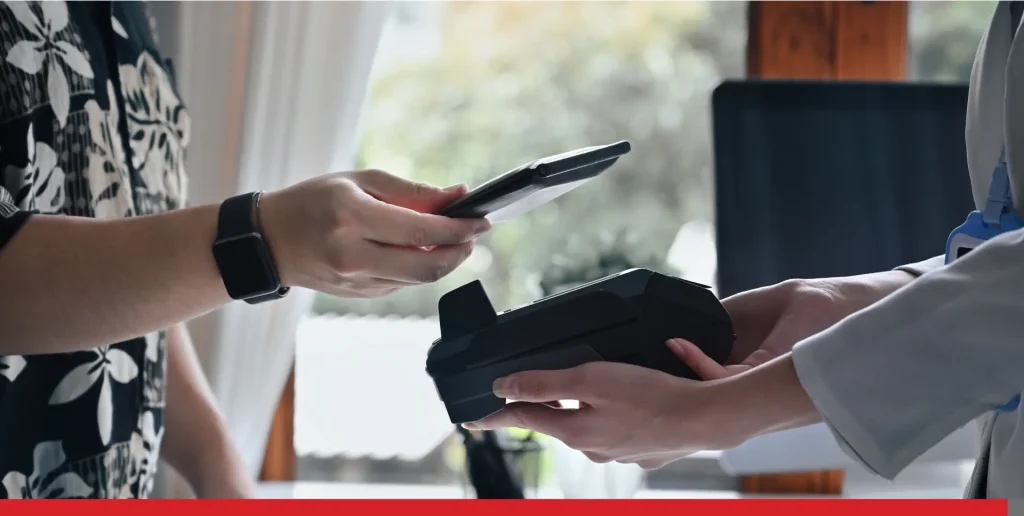As in many industries, trends constantly change. “Change is the only constant in life,” said Ancient Greek philosopher Heraclitus, his quote perfectly encompassing the current situation with eCommerce trends today.
With the daily rapid technological advancements, shifting consumer behaviours, and new market demands, businesses must adapt quickly to remain relevant by staying updated with eCommerce industry trends.
But what are the key trends driving these changes? And more importantly, how can you leverage them to boost your eCommerce strategy?
Let’s dive into the top eCommerce trends for 2024 that you need to know in order to stay competitive.
- 1. Artificial Intelligence & Machine Learning in eCommerce Industry Trends
- 2. Social Commerce: Shopping Goes Social
- 3. Sustainability & Ethical Shopping
- 4. The Role of Augmented Reality (AR) & Virtual Reality (VR)
- 5. Subscription-Based Models Are on the Rise
- 6. Headless Commerce
- 7. Flexible Payment Options
- 8. Marketing Automation
- 9. Zero-Party Data: Building Trust with Transparency
- 10. Omnichannel Retail: Merging Digital & Physical Shopping
1. Artificial Intelligence & Machine Learning in eCommerce Industry Trends
In 2024, Artificial Intelligence (AI) and Machine Learning (ML) will be critical to the future of eCommerce companies and solving customer pain points.
Personalized Shopping Experiences
These can predict customer preferences, suggest products, and even customize pricing by analyzing vast amounts of data. Have you ever seen a product recommendation that felt like it was reading your mind? That’s Machine Learning—or AI—at work.
A recent study found that businesses that use AI-driven personalization see conversion rates increase by as much as 60% with hyper-personalized campaigns, enhancing the customer journey through seamless and engaging interactions.
So why do you need to know this? You’re missing out if you’re not using AI to personalize your customer interactions!
Luckily with WordPress and other free or open source CMS platforms, content personalization is getting more common even for smaller online retailers with a smaller customer base.
AI Chatbots and Virtual Assistants
Chatbots and virtual assistants are essential tools for eCommerce businesses and will continue to be.
In 2024 these AI powered assistants will get even more advanced, handling complex customer queries and providing 24/7 real time customer support.
A virtual assistant helps customers find products and make purchase decisions based on previous buying behaviour and preferences. That’s the kind of customer experience that keeps customers coming back.

2. Social Commerce: Shopping Goes Social
Social media is no longer just for socializing; it’s a powerful tool to drive eCommerce sales.
Why use social media to promote your online store? Over 4.95 billion people are on social media, and according to stats, that number has doubled since 2015 and will continue to rise in the coming years.
Social commerce: selling products directly through social media channels will explode in 2024 and beyond, so it’s the perfect time for eCommerce brands to get on board and drive sales.
Shoppable Posts and Livestream Shopping
Instagram, TikTok, and Facebook have introduced shoppable posts so users can buy products from their feeds.
Meanwhile, livestream shopping, where influencers and brands showcase products in real time, is gaining popularity as a way to engage with audiences and drive sales.
For example, imagine tuning into a livestream where your favourite influencer is showing off a new range of skincare products. You can ask questions, see the product in action and buy—all without leaving the app. It’s like a virtual shopping party!
Influencer Marketing
Influencer marketing is still a crucial part of social commerce.
By partnering with influencers that align with your brand, you can reach new audiences and build trust.
Remember, people trust people, not ads. As influencer marketing evolves micro-influencers—those with smaller but highly engaged followings—are becoming more valuable because of their authentic connection with their audience.

3. Sustainability & Ethical Shopping
It’s amazing how the eCommerce industry has seen sustainability go from niche to mainstream. In 2024, more than ever before, consumers will be paying attention to the environmental impact of what they buy.
Eco-Friendly Packaging and Products
Consumers want more eco-friendly packaging and sustainable products. Brands that prioritize sustainability get more customers and a positive brand image.
In fact, a recent survey found that 70% of consumers are willing to pay more for sustainable products and up to 80% for locally sourced products.
Consider adopting:
- Biodegradable packaging
- Reduction of plastic use
- Sourcing of sustainable materials
You’ll be doing your bit for the planet and appealing to a growing market of eco-conscious consumers.
Transparent Supply Chains
Transparency is key to building trust with today’s consumers. They want to know where products come from, how they’re made, and who made them.
eCommerce platforms with third party sellers can make it hard to track their supply chain measures so it’s difficult to know exactly how the products are made and where the raw materials come from.
In 2024, brands have more tools to provide clear and honest information about their supply chains and stand out in a crowded market.
These tools help brands to be open and honest with existing customers and potential new ones. Consumers value transparency and will support brands that match their values.
A survey found that 94% of customers are more likely to stay loyal to a brand that commits to full transparency.

4. The Role of Augmented Reality (AR) & Virtual Reality (VR)
The eCommerce trend, of AR and VR, is revolutionizing customer experience by bridging the gap between online and in-store shopping.
Virtual Try-Ons and Showrooms
One of the biggest barriers to online shopping is the inability to try before you buy. AR and VR are solving this problem by allowing customers to try on clothes, accessories, and even makeup virtually.
This immersive experience not only enhances customer satisfaction but also reduces return rates.
Imagine being able to see how a piece of furniture would look in your living room without leaving your house. That’s the power of AR and VR in eCommerce, and that’s exactly what IKEA did not long ago with their AR application.
Sephora (Virtual Artist), L’Oreal (AR Try On), and other cosmetic companies are using AR to help people try makeup and other relevant products without needing to leave their houses.
Enhanced Product Visualization
AR and VR provide enhanced product visualization, allowing customers to see products from all angles and in different settings.
Virtual Mirror by Glasses is another interesting take on trying on glasses before you put them in your shopping cart—all without leaving your locale.

This technology gives customers a better understanding of what they’re buying, leading to more informed purchase decisions.
5. Subscription-Based Models Are on the Rise
Subscription-based models are becoming more and more popular in eCommerce; it’s a convenient and personalized shopping experience.
Convenience
Subscriptions offer convenience and predictability for both consumers and businesses. From beauty products to meal kits, subscription services ensure customers get their favourite products every month without having to reorder.
For businesses, subscriptions mean a steady stream of income and customer loyalty. A win-win for everyone!
Personalized Subscription Boxes for Enhanced Customer Experience
Personalization is key to subscription models. By offering personalized subscription boxes based on customers’ preferences and needs, businesses can create a unique and fun shopping experience that keeps customers coming back for more.
6. Headless Commerce
Headless Commerce is a new way of keeping the front of the website completely independent or decoupled from the backstage (the systems that handle orders, inventory, and customer data). That’s the beauty of headless commerce.
As customer expectations shift and online shopping habits diversify, the need for speed, flexibility, and customization has never been greater. Headless commerce allows businesses to innovate without being shackled by outdated systems and platforms.
Want to revamp your website’s design without disrupting your backend operations? With headless, you can, and that’s why it’s becoming a highly popular trend in eCommerce.
EasyHosting offers potential customers plenty of eCommerce solutions via its DIY Website Builder or Professional website design services, so that you can have the best service to suit all of your eCommerce businesses.
As you journey through the eCommerce landscape, remember that EasyHosting is your trusted partner, offering online guidance and support for every small business.
Email us at support@easyhosting.com
Call us: 1-888-390-1210

7. Flexible Payment Options
In 2024, eCommerce will be dominated by a growing array of flexible payment options, including those facilitated by mobile devices, that cater to modern shoppers’ preferences. Convenience is still crucial, and giving customers more ways to pay is a surefire way to win their loyalty.
Mobile Payments
As our phones become an extension of our daily lives, mobile shopping and mobile wallets like Apple Pay and Google Pay are changing the checkout experience with:
- Security
- Simplicity
- Speed
By going mobile, businesses can give customers a frictionless shopping experience guaranteeing they’ll keep coming back for more.
Buy Now, Pay Later (BNPL)
And for those who want a little extra flexibility, Buy Now, Pay Later (BNPL) is the way to go. With options like Klarna and Afterpay, customers can pay over time and make their bigger purchases feel more doable. This is especially popular with younger customers who value flexibility and convenience above all.
8. Marketing Automation
What’s the secret sauce to building strong customer relationships in eCommerce? Marketing Automation.
With powerful automation tools, businesses can create personalized experiences that feel tailor-made for every shopper—all without lifting a finger.
Automation makes repetitive tasks quicker to complete, while you can engage customers at every stage of their journey, from initial interest to post-purchase follow-ups. The results are stronger relationships, higher conversion rates, and more loyal customers.
9. Zero-Party Data: Building Trust with Transparency
Marketing strategies are almost always based on data. But consumer privacy, and the need to pursue it, remain on the list of growing eCommerce trends we’ll see going forward.
While 62% of US-based customers believe it’s impossible to live daily life without companies collecting data, 92% are concerned about their privacy when browsing the internet.

10. Omnichannel Retail: Merging Digital & Physical Shopping
For today’s shoppers, the distinction between shopping online and offline shopping is almost non-existent.
Whether they’re scrolling on their phone, making a purchase on a laptop, or physically browsing in-store, customers now expect a smooth, integrated experience across all platforms. This is the core of omnichannel retail.
An omnichannel strategy ensures that customers can seamlessly engage with your brand wherever they are—online or offline. Leading companies like Nike are setting the standard by merging personalized recommendations from mobile apps with the in-store experience customers expect
Businesses that can unify the digital and physical shopping experience will gain a competitive edge going forward in 2024 and beyond.
Conclusion: Be Ahead of the Game in 2024
2024 is going to be a more competitive eCommerce year than ever—and we can say that for every year to follow.
To stay ahead, businesses need to get on board with these trends in eCommerce and adapt to changing consumer habits. From AI and ML to sustainability, there are lots of ways to boost your eCommerce strategy.
So, what’s next? Are you going to harness the power of AI, tap into social commerce, or maybe even try out AR and VR? Whatever you choose, remember that being competitive in eCommerce means utilizing innovation and flexibility while also knowing your customer.
Embrace these trends, and you’ll not only stay in the game but thrive in the ever-evolving world of eCommerce.
Ready to start your eCommerce business? Email us at support@easyhosting.com or call us at 1-888-390-1210 to learn more about what EasyHosting.com can offer.
FAQ
What’s hot in eCommerce right now?
AI and machine learning for personalization, social commerce, sustainability, AR and VR, and subscription models. AI and machine learning will get even more personal and efficient. AR and VR for product visualization and try-ons are about to blow up.
Is it easy to start my own eCommerce site?
Professional website design like eCommerce sites need a robust web hosting solutions that can hold the additional load of thousands of potential customers requesting it at the same time. EasyHosting offers its Professional Website Design with support of up to 1000 products while you can also sell from social media and other online marketplaces.
What will eCommerce’s future look like in 5 to 10 years?
In 5 to 10 years, eCommerce will be an even bigger part of our daily lives. AI, machine learning, AR, VR, and sustainability will lead the way. The industry will come to focus on seamless, personal, and eco-friendly shopping.
How is Zero-Party Data different from first-party data?
Zero-party data is information that customers proactively share with brands, while first-party data is collected based on interactions without explicit consent.



